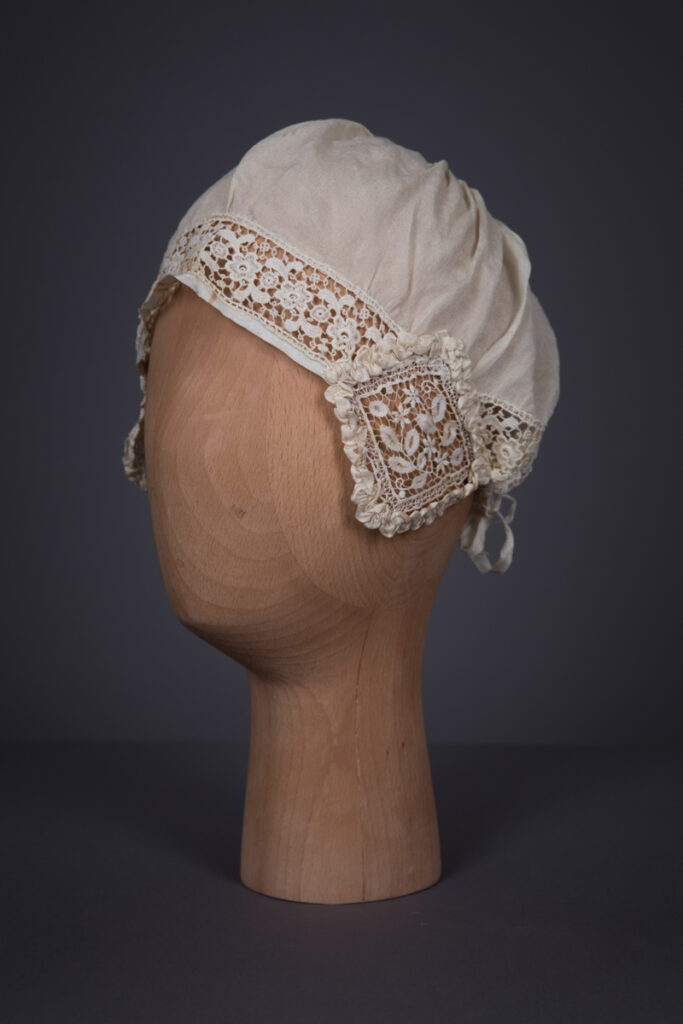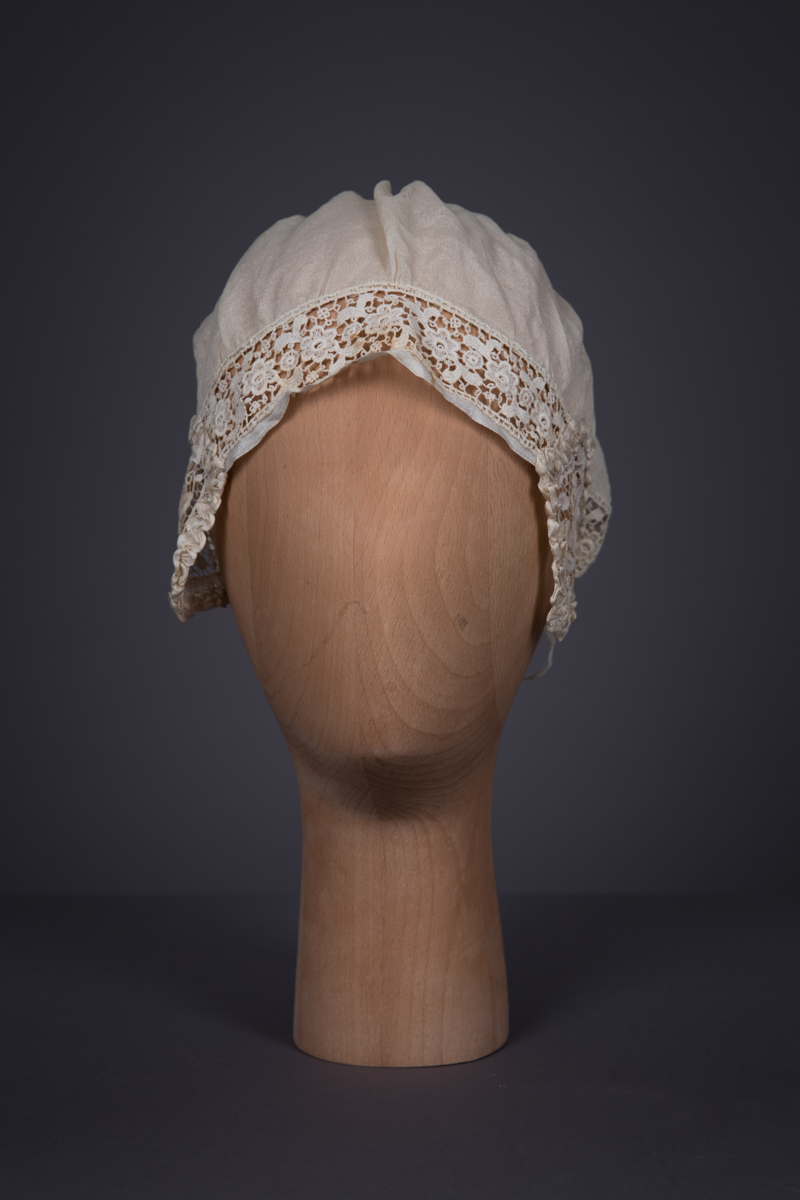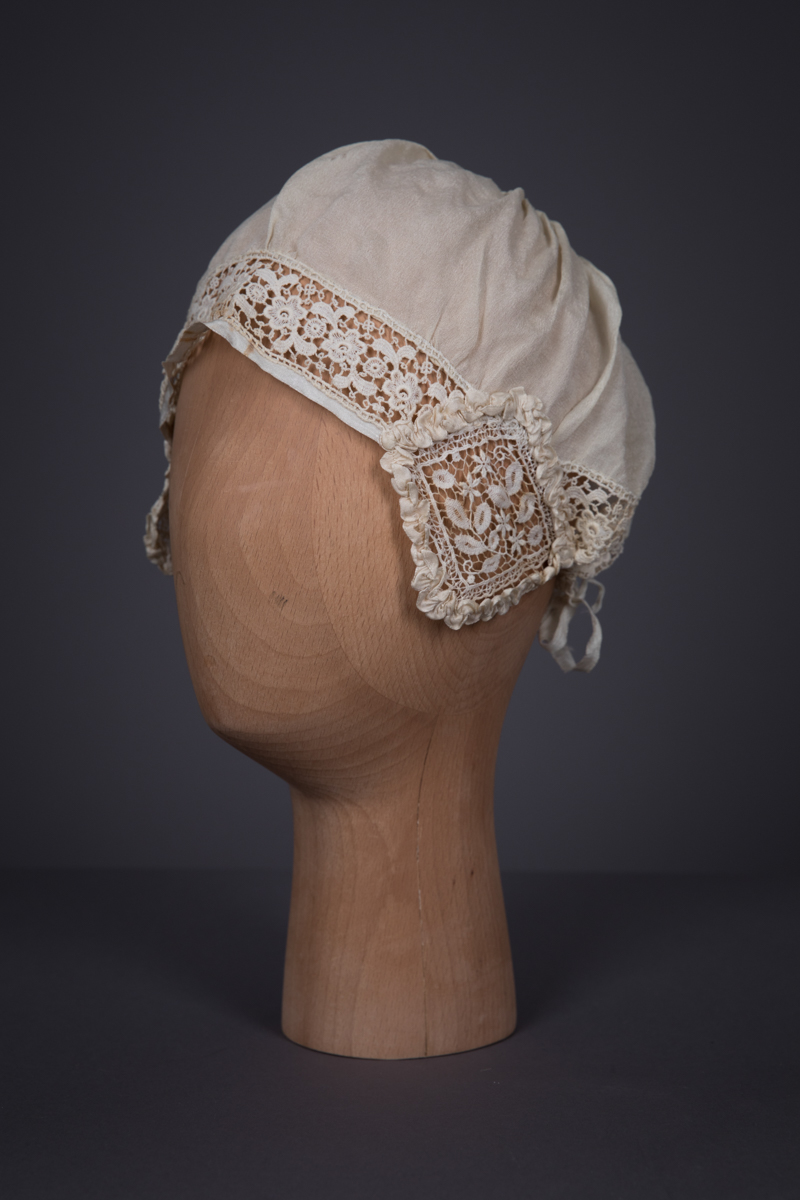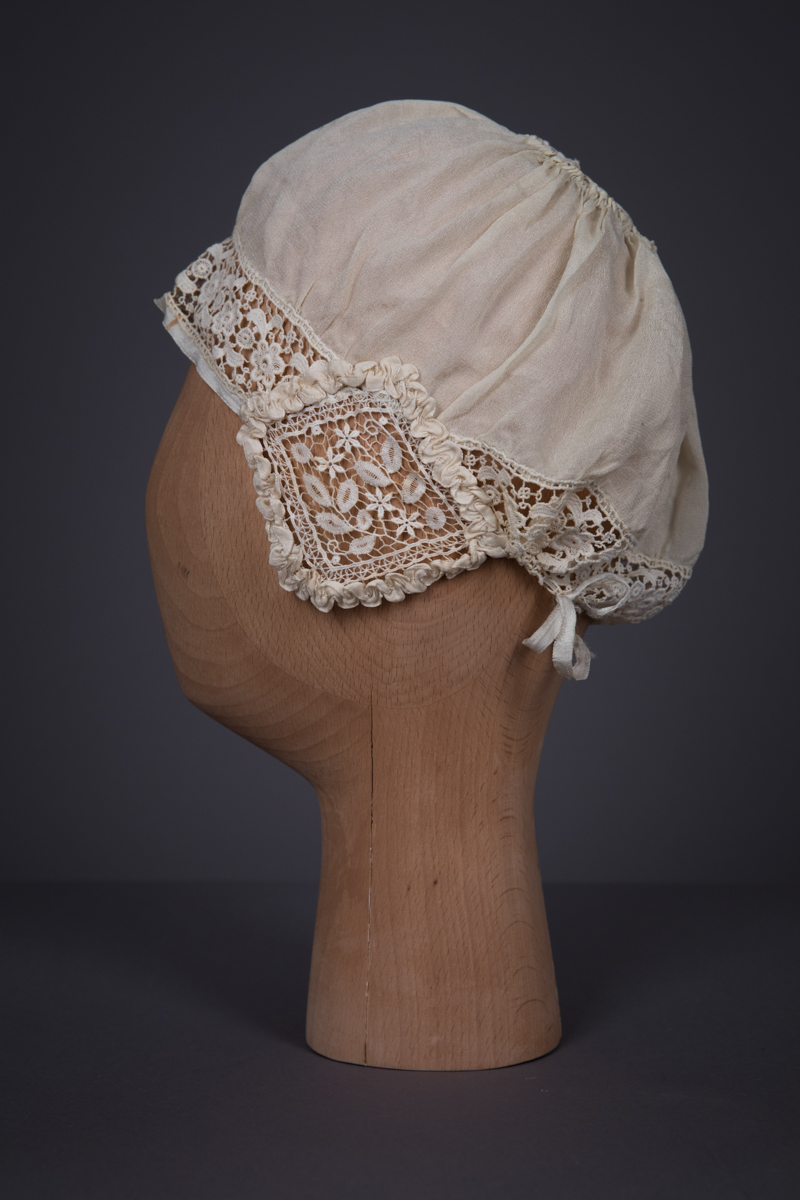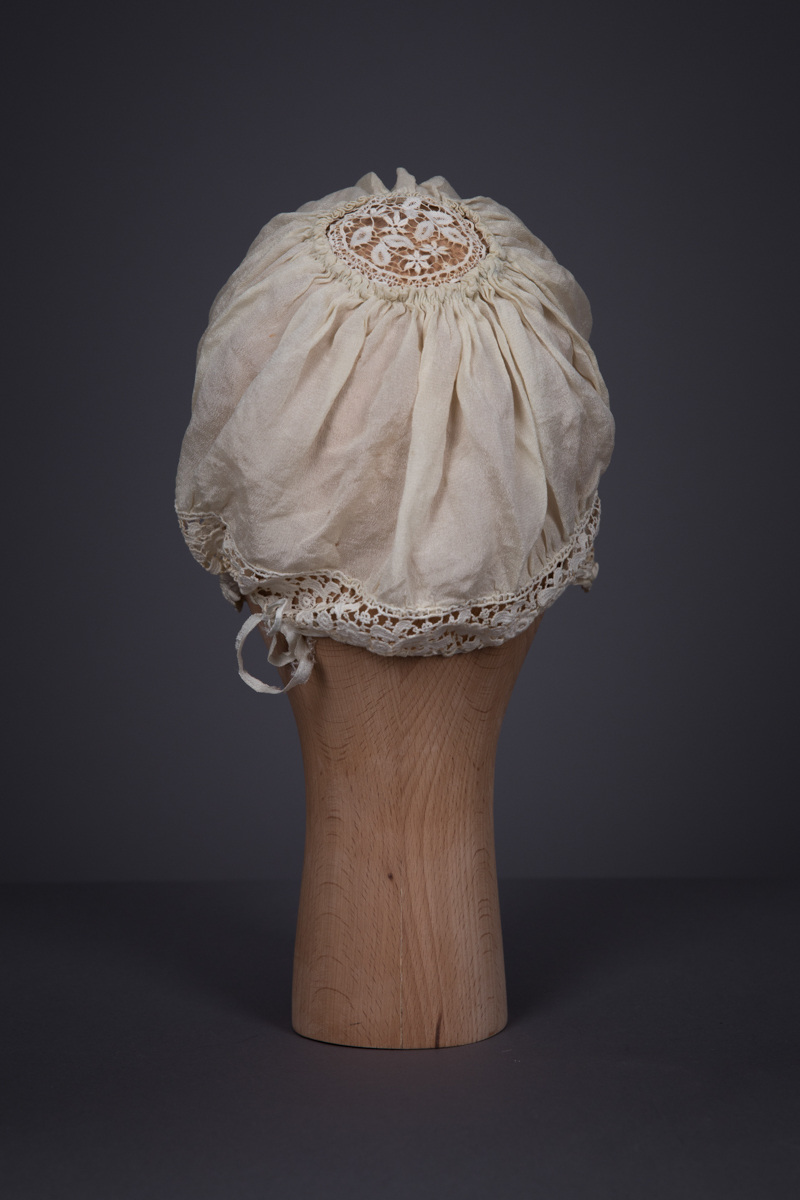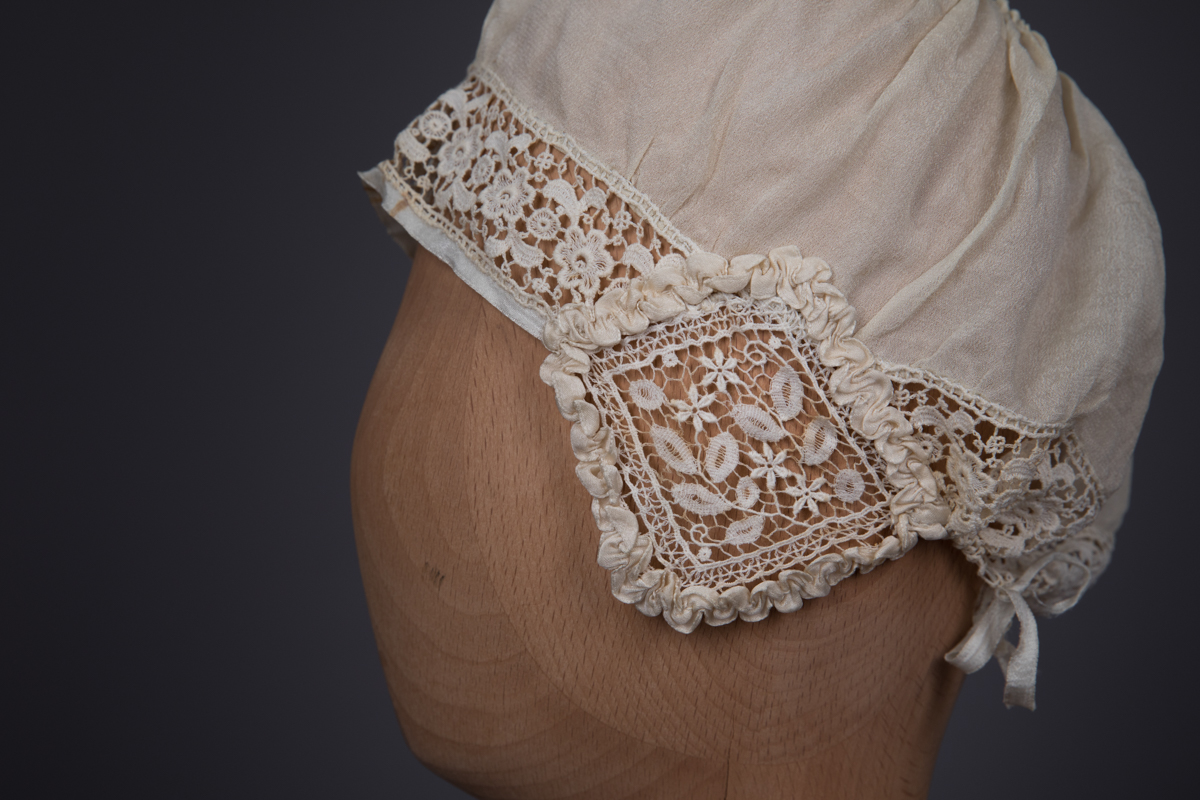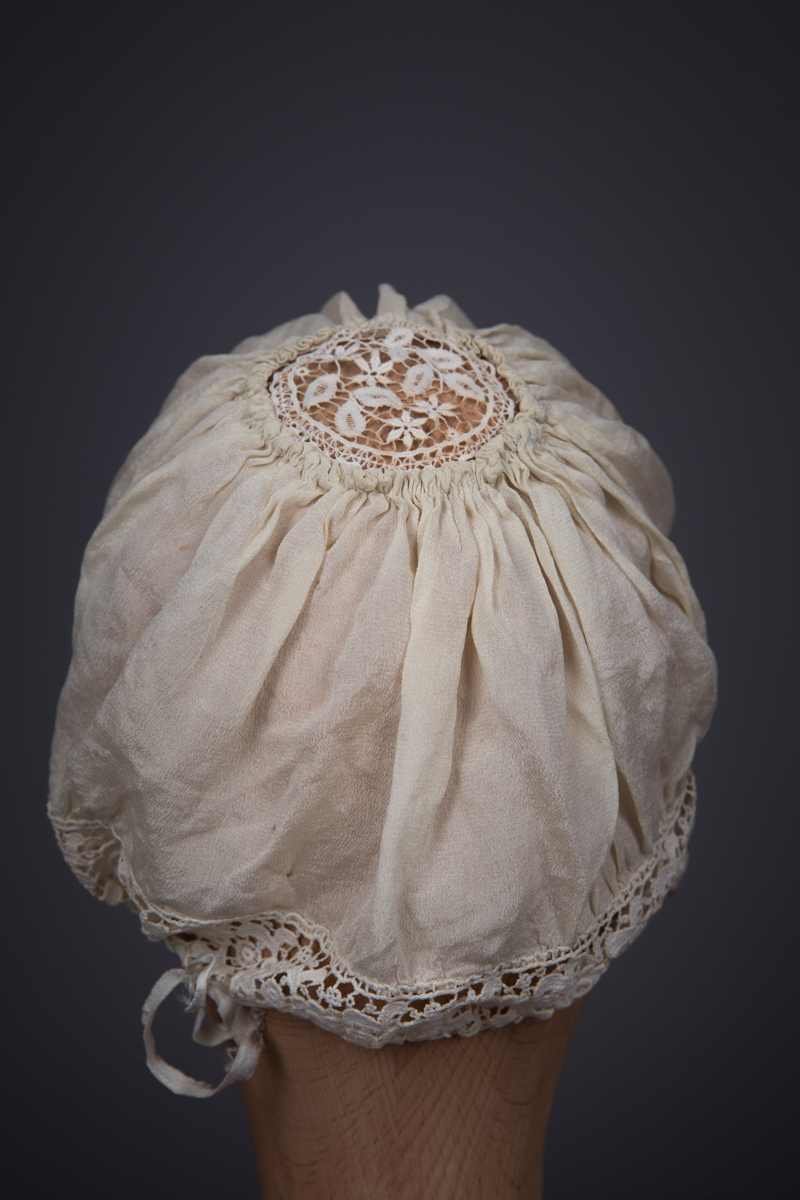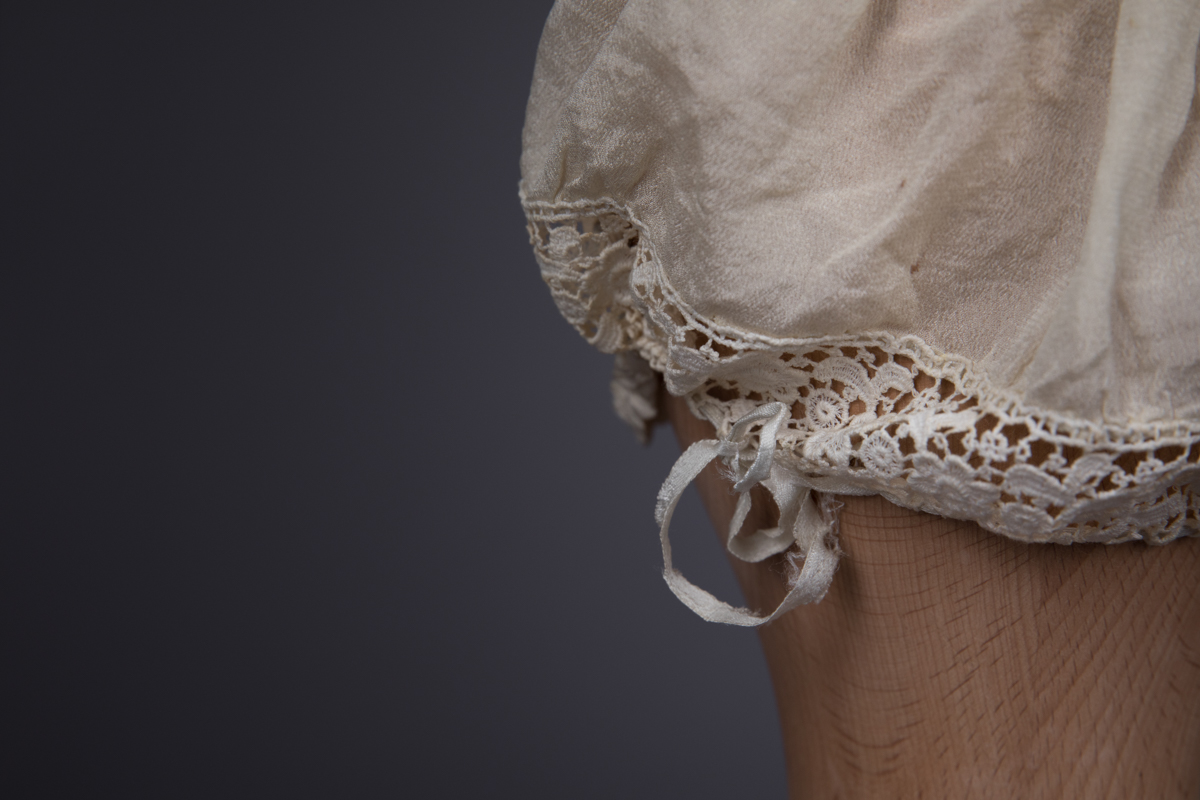Date: c. 1910s
Origin: Unknown
Fabric: Silk, lace
Brand: Unknown
A boudoir cap in silk habotai, trimmed with chemical lace. Machine lace panels cover the ears, framed by silk ribbonwork ruffles. A third panel of chemical lace is inserted into the crown of the cap, with the silk habotai gathered around this circular panel. Silk ribbon is slotted through the lace trim at the centre back of the cap, and can be gathered and tied to tighten the cap.
The boudoir cap is a type of lingerie headwear, most commonly worn during the nineteenth to early twentieth centuries. It was originally worn over undressed hair, worn in the privacy of the boudoir alongside nightwear. In the 1910s and 1920s, it would be commonly worn to protect shorter hair styles during sleep. As the designs became more and more elaborate towards the 1930s, it began to be considered more of a decorative hair net. Like other forms of lingerie, boudoir caps were usually made in fine fabrics such as lace, tulle and satin. Embellishment was often profuse, with techniques such as ribbonwork being particularly commonplace.
From the collection of Karolina Laskowska
